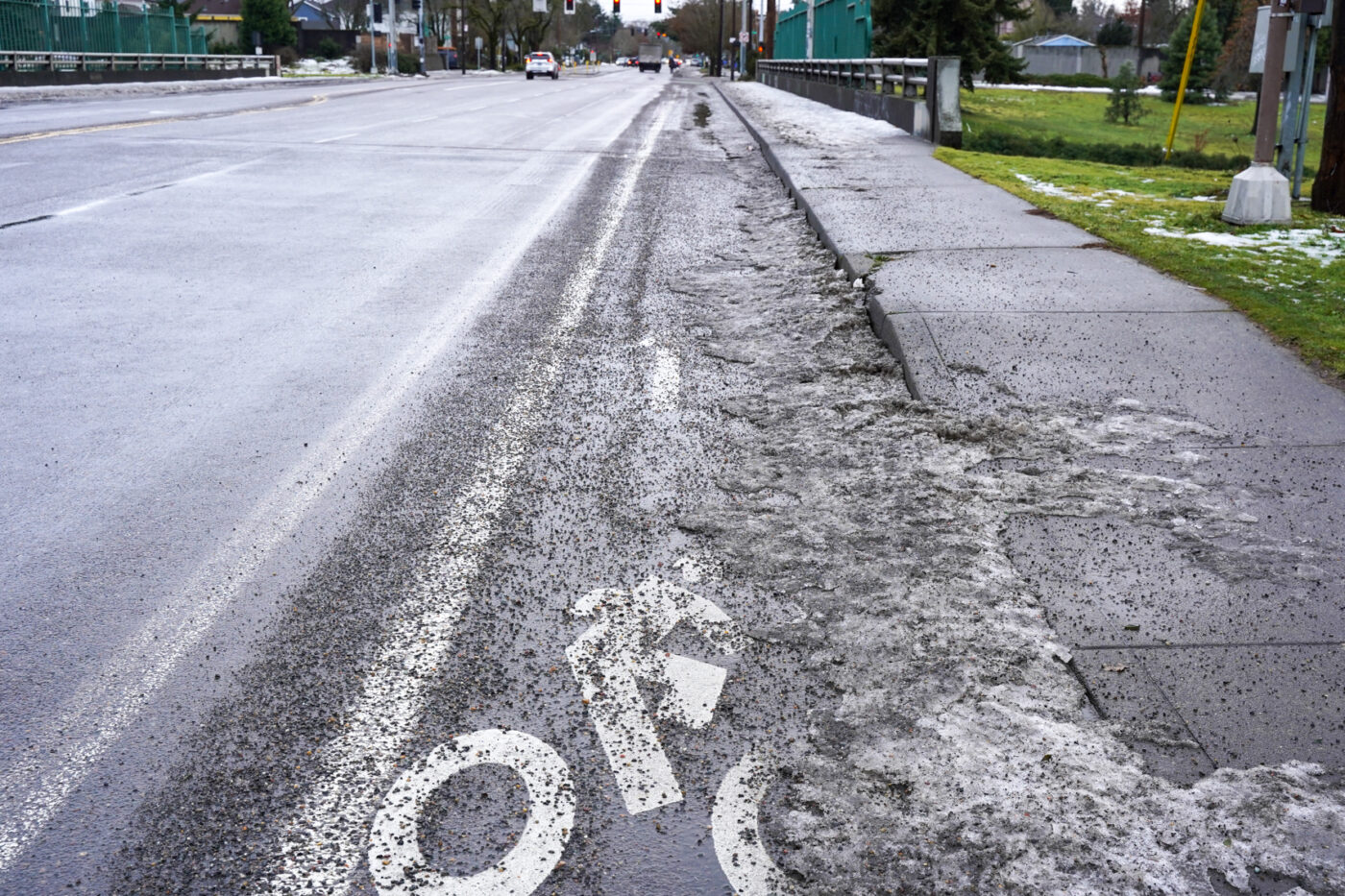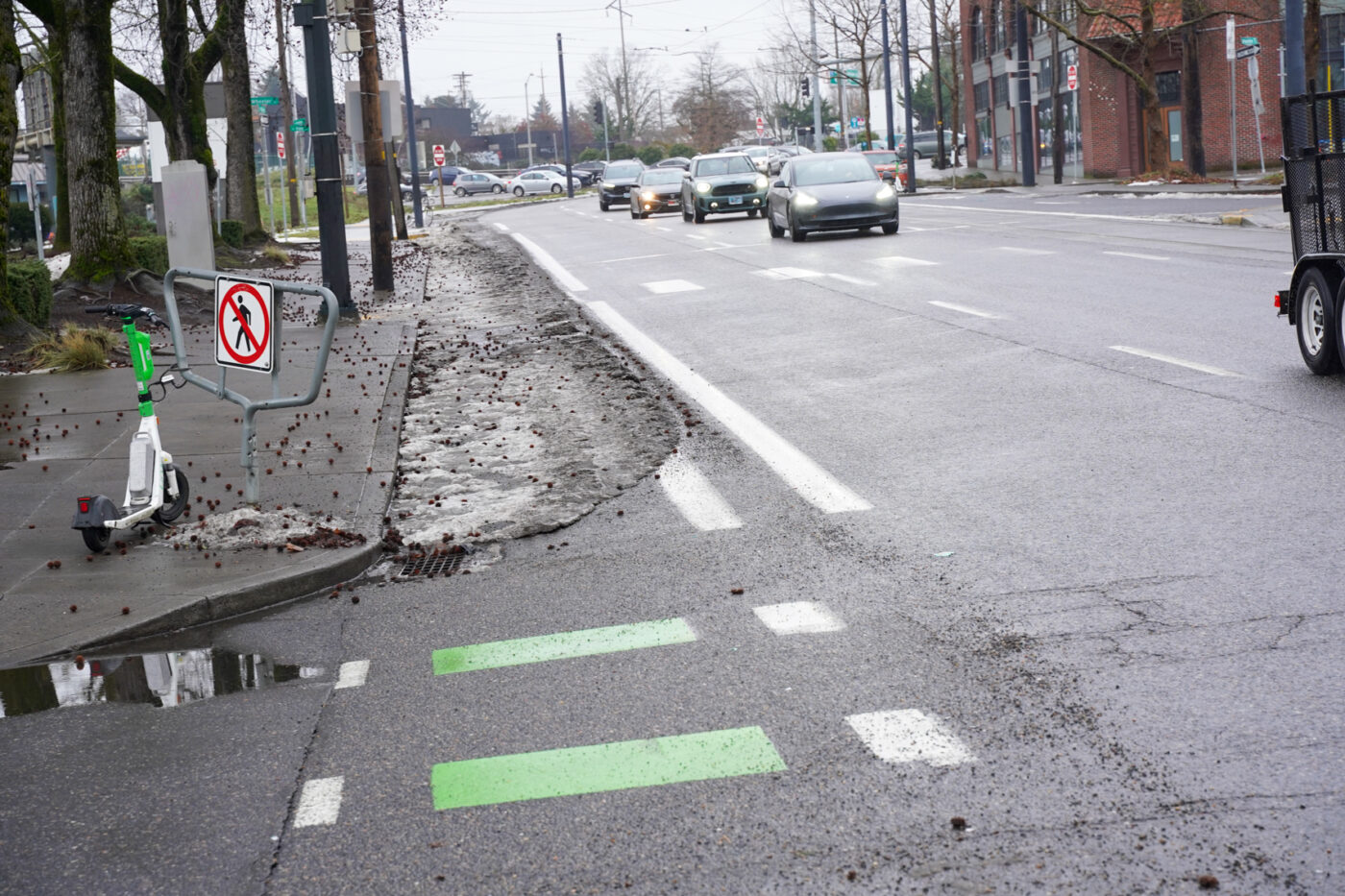Detail from PBOT’s new gravel clean up map. View it here.
Gravel in bike lanes has been a thorn in the side of Portland cyclists for many years. I realized today that as far back as 2007 BikePortland has shared stories of woe from Portlanders concerned that the gravel sprayed onto the road by the Portland Bureau of Transportation after snow or ice storms becomes a hazard long after the storm (and the need for the gravel) has passed.
One of the issues we struggle with is a lack of transparency about how long it will take PBOT to sweep it back up, and where they are focusing efforts to do so.
I’m happy to report that this year, PBOT has taken a great step forward in not only transparency, but in having focused attention on clearing gravel from bike routes. They’ve published a new map that shows a live view of where gravel pick-up is happening. As of 10:30 am this morning, PBOT had swept 299.4 miles of roads. Of those roads, 17.9 miles of protected bike lanes have been swept.
Video of a PBOT sweeper on the N Rosa Parks Way protected bike lane posted by The eBike Store on Wednesday. (Sped up 2X).


























